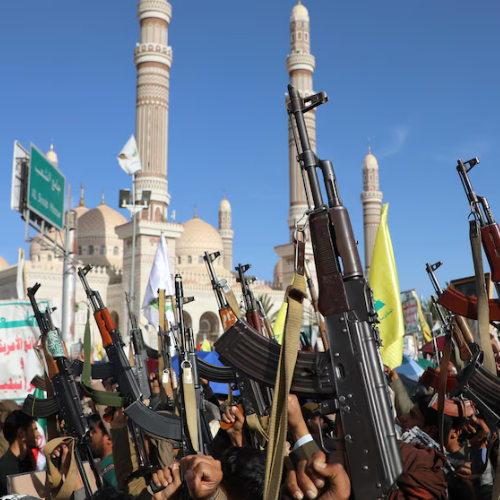Yemen’s Houthi rebels, once a small, limited local group, have grown into a powerful military force, largely due to support from Iran and allied forces. This transformation has shifted them from a regional movement to an influential military player with enhanced weaponry and capabilities. A recent United Nations report explained how assistance from Iran, Hezbollah (a militant group in Lebanon), and other allies helped the Houthis advance their military skills and obtain sophisticated weapons.
Starting in 2014, the Houthis took control of Yemen’s capital, Sanaa, and other northern regions, sparking a civil war with Yemen’s recognized government, which is backed by a coalition led by Saudi Arabia. Over the years, the Houthis have received extensive training and advanced weaponry, including missiles and drones, which have boosted their strength and widened their influence far beyond Yemen.
Advanced Weapons and International Support
The UN report revealed that the Houthis’ improved capabilities were not achieved on their own. Military experts and officials believe that the group received various forms of military and financial aid from Iran’s Islamic Revolutionary Guard Corps, particularly its elite Quds Force, Hezbollah, and experts from Iraq. This assistance includes advanced weapon systems that are difficult to produce locally, such as ballistic missiles, drones for surveillance and attack, and portable air defense systems. According to the UN experts, the transfer of technology, equipment, and training has been on a scale that is almost unprecedented.
With the Houthis using newly obtained advanced missiles like the Hatem-2 and other complex weapons, they have managed to expand their attacks beyond Yemen. In one instance, they targeted commercial ships and U.S. and British warships in the Red Sea and the Gulf of Aden—a critical area for global shipping. Data from the U.S., U.K., and International Maritime Organization indicates that the Houthis carried out at least 134 attacks from November 2023 to July 2024. Despite Houthis’ claims that they are only targeting vessels linked to Israel, the report suggests they have been indiscriminately attacking various ships, adding to instability in an already tense region.
Recruitment and Increased Fighting in Yemen
Along with their growing military strength, the Houthis have intensified recruitment efforts within Yemen. They now have an estimated 350,000 fighters, up from 220,000 in 2022 and only 30,000 in 2015. The UN report highlighted disturbing tactics in their recruitment process, including targeting children and vulnerable communities. Many children as young as 10 or 11 are reportedly recruited, with sermons promoting the idea of “jihad” delivered in schools to encourage young participation. Additionally, Ethiopian migrants have been forced to join the Houthi ranks, and others have been coerced into trafficking drugs, a tactic meant to provide more resources for their war efforts.
Reports also indicate that young recruits are given dangerous roles in the conflict, such as being used as human shields, spies, and messengers, and tasked with placing landmines and explosives. The number of children recruited increased after the recent Israel-Hamas conflict began, with Yemen’s government reporting over 3,000 cases in the first half of 2024 alone.
Espionage Crisis Unveils Cracks in Iran’s Axis of Resistance
The UN report also points out the influence of Iran’s “Axis of Resistance,” a coalition that includes groups like Hezbollah, Hamas, and various armed groups in Iraq and Syria. The Houthis’ close association with this alliance has not only provided military resources but also strengthened their position in the Middle East as they join forces with other groups in this coalition. Coordinated military planning now takes place at joint operations centers in Iraq and Lebanon, allowing the Houthis to align with larger strategic goals set by the alliance.
Rising Tensions and Uncertain Times
The transformation of the Houthis from a small local group into a formidable military force has introduced a new level of complexity and danger in the Middle East. The increased conflict in Yemen has added to the overall instability in the region, as the Houthis continue to challenge the Yemeni government and its allies. According to UN experts, their presence in international waters, particularly the Red Sea and Gulf of Aden, disrupts global shipping and poses serious risks to international security.
Since October 2023, when the conflict between Israel and Hamas escalated, the Houthis have amplified their attacks and gained popularity among anti-Israel groups, even attacking commercial ships to disrupt trade. Their relationship with regional powers and militant organizations, including al-Qaeda in the Arabian Peninsula and al-Shabaab in Somalia, further complicates the situation. Yemen, a country once seen as a localized battlefield, has now become a focal point for international conflicts. Experts from the UN emphasize that this change from a regional to an international issue reflects the power shift and the dangers posed by Houthis’ strengthened forces, both for Yemen and the broader Middle East.


